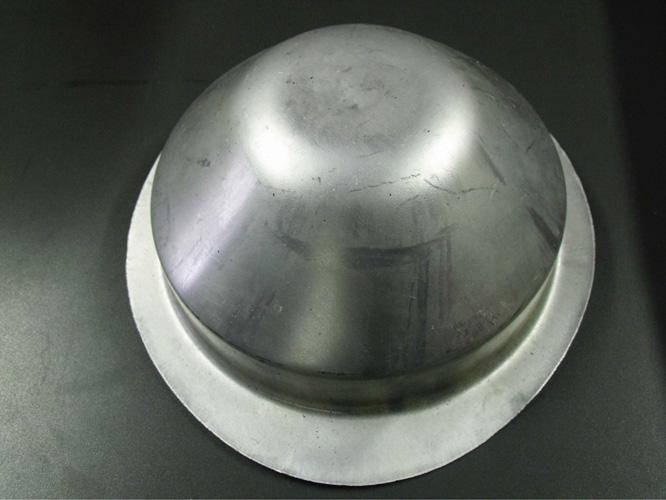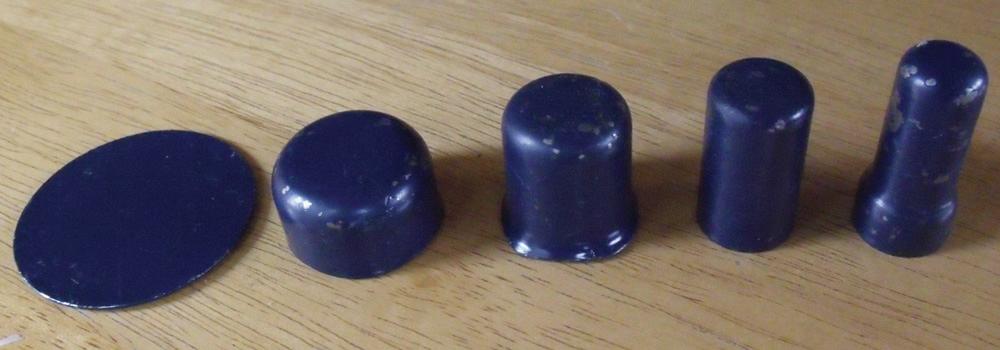Contributing Writer
- FMA
- The Fabricator
- FABTECH
- Canadian Metalworking
Categories
- Additive Manufacturing
- Aluminum Welding
- Arc Welding
- Assembly and Joining
- Automation and Robotics
- Bending and Forming
- Consumables
- Cutting and Weld Prep
- Electric Vehicles
- En Español
- Finishing
- Hydroforming
- Laser Cutting
- Laser Welding
- Machining
- Manufacturing Software
- Materials Handling
- Metals/Materials
- Oxyfuel Cutting
- Plasma Cutting
- Power Tools
- Punching and Other Holemaking
- Roll Forming
- Safety
- Sawing
- Shearing
- Shop Management
- Testing and Measuring
- Tube and Pipe Fabrication
- Tube and Pipe Production
- Waterjet Cutting
Industry Directory
Webcasts
Podcasts
FAB 40
Advertise
Subscribe
Account Login
Search
Die Science: Drawing and stretching
What difference does it make to know the difference?
- By Art Hedrick
- July 1, 2015
- Article
- Bending and Forming
When I conduct training seminars on drawing and stretching, I usually bring with me a variety of unusual parts made using those processes. Often, attendees ask how to stretch the metal into a shape such as a deep can or deeply formed part without splitting the metal. I simply answer: “We don’t. We draw the metal into the cylinder shape.”
After they give me a perplexed look, I usually tell them that I will explain the concept in the seminar.
Drawing
Of all of the forming processes used in sheet metal stamping, drawing is one of the most impressive. In the drawing process, the surface area of a blank is displaced by tension into a different shape via controlled metal flow. Flow occurs as the metal feeds into the cavity.
Basically, if the blank is changing its outer profile as the metal is formed, drawing is taking place.
Drawing is one of the most complicated yet effective ways of shaping sheet metal. The key is to try to form the sheet metal with as little stretching as possible, although a slight amount of stretching will occur because tension is involved in the drawing process.
In drawing, a punch pulls the metal into the forming cavity, so it forms the metal in tension. Anytime the metal is in tension, excessive thinning or splitting of the metal can occur. A pressure-loaded plate called a draw pad keeps the flowing metal constrained between two working die surfaces to prevent it from wrinkling as it flows into the die cavity.
The space between the die surfaces is about the same thickness as the metal. If the metal is overpinched between the two working surfaces, it might prevent the metal from flowing, resulting in excessive stretching and possible splitting of the metal.
The drawing process is used to make thousands of different common parts, such as oil filters, deep-formed auto parts, kitchen sinks, cookware, motorcycle gas tanks, and fenders.
The blank size with respect to the drawing punch size is an important factor contributing to the amount of flow or stretch that occurs when the metal is formed. If the blank is too large with respect to the drawing punch size, the metal may stretch and split. However, if the blank is an acceptable size with respect to the drawing punch size, the metal will flow inward and less stretching will occur (see Figure 1).
Deep Drawing
In deep drawing, the part’s geometry is two or more times as tall as the minimum part width. For example, a round drawn cup that is 3 inches in diameter and 1 in. tall is not considered a deep-drawn part. If the cup is 1 in. in diameter and 3 in. tall, however, it is deep drawn.

Figure 1
In the drawing process, the surface area of
a blank is displaced by tension into a different
shape via controlled metal flow.
The deep-drawing process often requires more than one drawing process. When more than one drawing process is used, the preceding drawing operations often are referred to as redrawing or reduction. The draw reduction process often is used to produce very deep geometry. Like a single drawing process, redrawing uses both metal flow and tension to achieve the finished results (see Figure 2). Certain parts might require as many as 15 drawing operations.
Care is required during excessive redrawing, because the metal work-hardens each time it is formed. Some special redrawing processes use an in-die metal heating process called annealing between drawing stations to soften the metal so it can be redrawn successfully. Many special superalloys used in the aircraft industry require annealing between every drawing process. This explains why aircraft parts can be so expensive.
Many common parts are made using deep drawing, such as beer kegs, fuel filter housings, hardware for door locks, pen ink barrels, battery cases, and battery cases for pacemakers. The list is almost endless.
Stretching
In the stretching process, the surface area of a blank is increased as a result of tension and thinning of the metal. Don’t confuse stretching with drawing. During drawing, the metal is flowing in the die, and the blank is changing shape. During stretching, there is no inward movement of the blank edge.
Stretching dies are very similar to embossing dies, except that unlike most embossing dies, stretching dies use a high-pressure binder to restrict and stop metal flow. A binder is like a drawing pad, but it intentionally restricts the metal from moving inward. Parts such as automobile hoods, roofs, and fenders are made using stretching dies.
Stretching the metal over a well-finished, smooth punch gives the metal a good surface finish suitable for painting. It also cold-works the metal for dent resistance. Areas of parts requiring smooth, aesthetically pleasing, defect-free surfaces—such as exposed body panels like hoods and doors—often are designated as Class A surfaces.
Some dies use a lot of metal stretching and flow to achieve the finished part shape. These types of dies often are referred to as stretch drawing dies, which indicates that the process involves drawing combined with stretching.
What Difference Does It Make?
It is important to understand clearly the difference between drawing and stretching, especially when analyzing a part print or determining the process steps needed to make a certain part geometry. Some parts with deep depressions or forms in the center can be quite complicated and costly to make. Knowing which process to use can save both time and money.
About the Author

Art Hedrick
10855 Simpson Drive West Private
Greenville, MI 48838
616-894-6855
Related Companies
subscribe now

The Fabricator is North America's leading magazine for the metal forming and fabricating industry. The magazine delivers the news, technical articles, and case histories that enable fabricators to do their jobs more efficiently. The Fabricator has served the industry since 1970.
start your free subscription- Stay connected from anywhere

Easily access valuable industry resources now with full access to the digital edition of The Fabricator.

Easily access valuable industry resources now with full access to the digital edition of The Welder.

Easily access valuable industry resources now with full access to the digital edition of The Tube and Pipe Journal.
- Podcasting
- Podcast:
- The Fabricator Podcast
- Published:
- 04/16/2024
- Running Time:
- 63:29
In this episode of The Fabricator Podcast, Caleb Chamberlain, co-founder and CEO of OSH Cut, discusses his company’s...
- Trending Articles
AI, machine learning, and the future of metal fabrication

Employee ownership: The best way to ensure engagement

Steel industry reacts to Nucor’s new weekly published HRC price

How to set a press brake backgauge manually

Capturing, recording equipment inspection data for FMEA

- Industry Events
16th Annual Safety Conference
- April 30 - May 1, 2024
- Elgin,
Pipe and Tube Conference
- May 21 - 22, 2024
- Omaha, NE
World-Class Roll Forming Workshop
- June 5 - 6, 2024
- Louisville, KY
Advanced Laser Application Workshop
- June 25 - 27, 2024
- Novi, MI




























